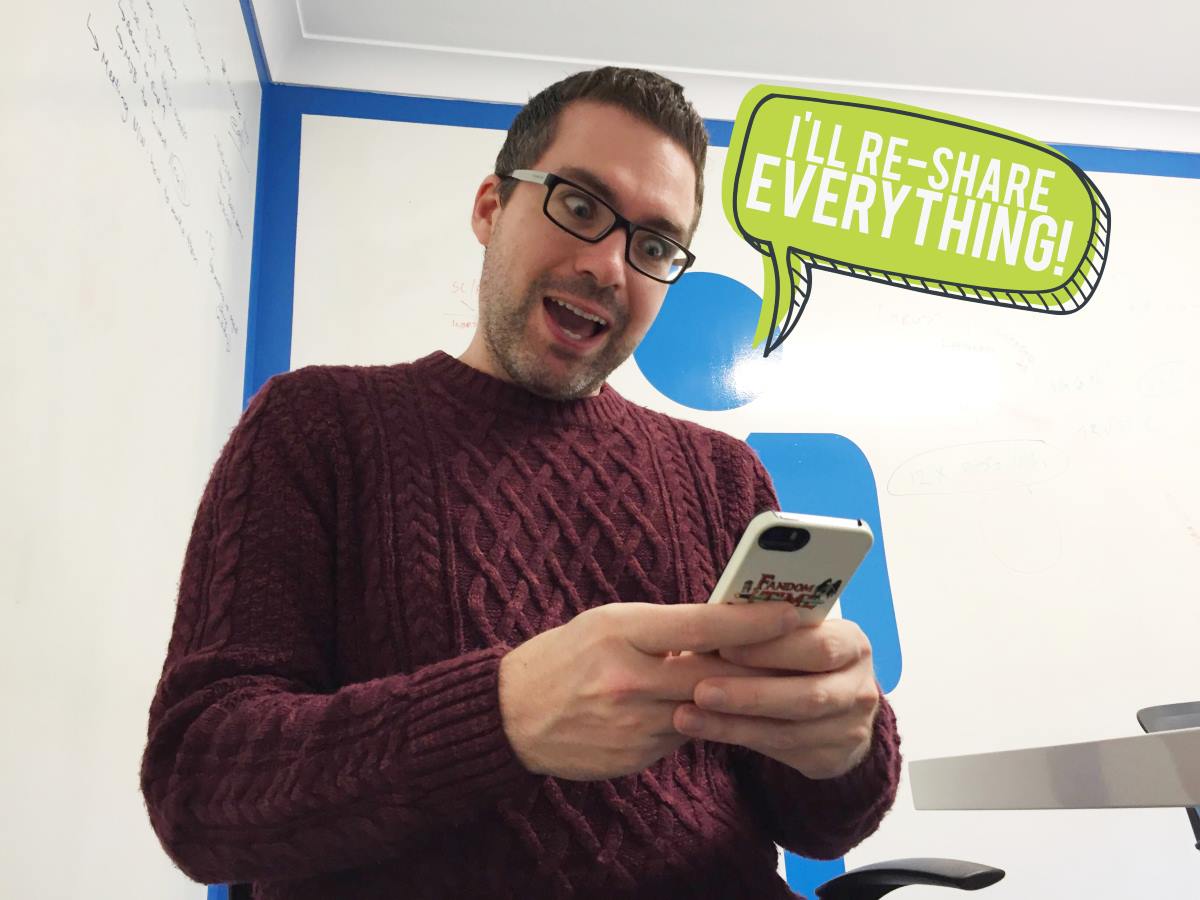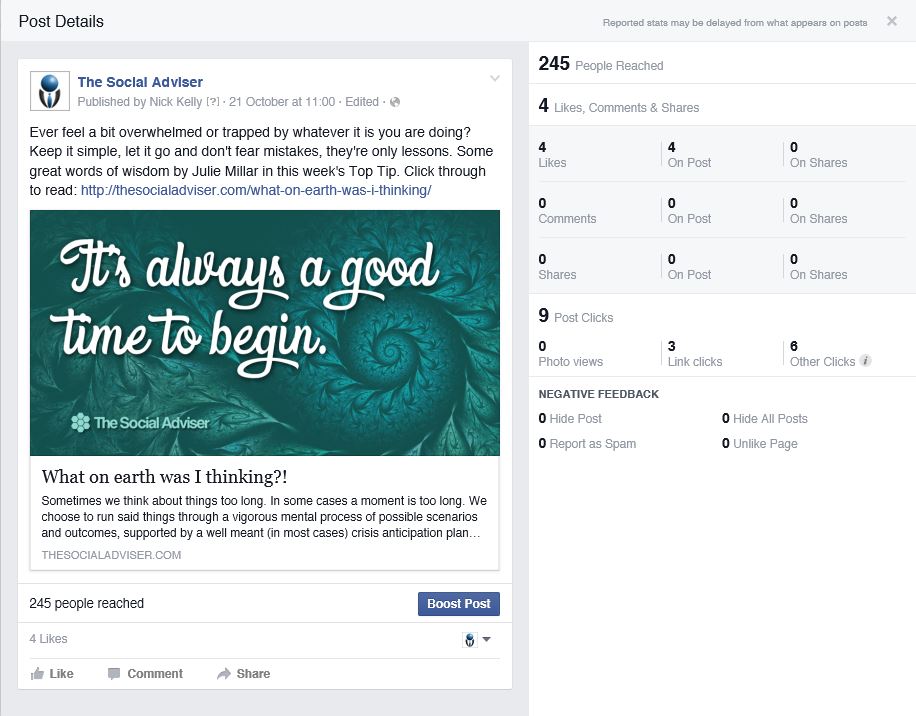I’ve got some bad news. If you didn’t know already, the content that you publish to social media is competing with thousands, if not hundreds of thousands, of pieces of content from other publishers and businesses who are vying for the same time from your audience and network that you are. But whilst most of the ‘competitors’ probably aren’t in your industry, since social media platforms are so jam packed full with videos from clothes designers, promotions from retailers, and pictures from random animal ‘fails’ (and anything in between), the chance of your post being the one that grabs their eye is slim.
But don’t worry, I’ve got a simple trick up my sleeve to help you beat those pesky goats, and get more eyes on the prize! i.e. your content.
The tip that I have is not about spending money to ‘boost’ or ‘promote’ posts. Many social media platforms have the ability for you to do this, and the term ‘pay to play’ is fast becoming synonymous with Facebook and Twitter. There are absolutely benefits to promoting your content, to engage more of the people who already ‘like’ or follow you, or to get your posts in front of more people who have yet to hear about you. If you’re not careful though and don’t have an understanding of how to target your audience, you could be promoting to the wrong crowd. Think of a real estate agent promoting a post of a brand new house for sale which ends up in front of someone who recently bought a house… not exactly the best use of their money.
Ok, so what’s my tip?
Recently I posted a piece of content on The Social Adviser’s Facebook page (but my tip is just as powerful on ANY social media platform). It was a standard ‘share’ of a blog post from our own Julie Millar. The blog post itself has had incredible feedback via our e-mail list (if you’re not already signed up, click here to receive our regular emails and also score a free e-book to help you define what your social business should look like). As I write this, Julie’s blog enjoyed an email open rate of 28% (one of our highest in recent memory) and led to a few hundred new page views on our website.
I posted on Facebook at around 12pm AEDT (when our NSW and Victorian audiences might be on lunch) and waited to see the reactions. Our recent data shows that with a link to an external site within the post, I could hope to reach approximately 5% of our fans organically (that’s without boosting the post). That’s 50 people. Here’s how the post did:
Not a bad result, nearly 250 people reached, and we got 3 extra clicks to the website. Might not seem like a lot, but the way we see it, that’s 3 extra people who can now benefit from the great blog post!
Now here comes my crazily simple trick….. I shared it AGAIN
Yep, I shared it on our Facebook page again. “Nick you sly devil, I read all this way just be told ‘Do it again’” you may be thinking. But let me ask you, how often do you re-share content that you’ve previously posted on social media? Until I thought about it, at The Social Adviser we rarely re-share a post on Facebook or Twitter again in the same week or even month. Most of our efforts are for brand new posts, images, or ‘curated’ (i.e. sharing someone else’s) content.
By re-sharing the post we are increasing the number of eyes on our content and saving time by not having to create brand new content all the time! Yes, we may not know specifically if some people see the post twice, but based on our post insights, we still had over 700 people who like our page who have not seen it at all.
So how did we do:
The second post was made a day later, and at a different time in the afternoon which will have an impact on how successful this strategy is (on Facebook, you can evaluate your own ‘ideal’ times to post via your ‘page insights’ tab). You’ll notice that we haven’t exactly gone viral here but think about the cumulative effect.
With sharing the blog post a second time for those who may have missed it, we reached an extra 98 pairs of eyes, totaling a reach of 443 people. With our total Facebook page likes being just over the 1,000 mark, posting a second time bolstered our reach from 25% of our audience to a total of 44% of our total Facebook ‘likers’.
Not bad considering we haven’t spent a penny yet.
This tactic won’t work for every one of your posts, and nor should you share everything more than once. You’ll get the best results on re-sharing if you post content that your audience wants to read versus content that you feel is best to share. What I mean by this is that if you re-share content that didn’t garner any likes, comments or shares in the first place, it may be because your audience did not find it useful, timely, or relevant.
Look over the analytics of your posts (regardless of which social platform you are using) to see which post has had some stand out interaction or engagement, and think about how you can make that most relevant to the reader again.
Have a picture from last year from a team function that did well on social? Re-sharing on the 1 year anniversary, or sharing again with the caption ‘remember when…’ is a great example of this. The term ‘Throwback Thursday’ is now used globally to share older content on a Thursday, and a great way for newer followers, who may never have seen that post, get in on the action.
Don’t go too ‘re-share crazy’
 If you re-share everything a couple of days later as a general habit, then your audience is going to come to expect this from you, which then might start working against you as they switch off to any message coming from your particular social media page/profile. Pick your moments and use this tactic sparingly.
If you re-share everything a couple of days later as a general habit, then your audience is going to come to expect this from you, which then might start working against you as they switch off to any message coming from your particular social media page/profile. Pick your moments and use this tactic sparingly.
If you’re just too busy to write something original this week, look back at a post from last month and consider re-sharing it. If you’ve got something really time sensitive for your audience to act on, then post a couple of times in the same day, but it’s important to only make this approach a part of your overall strategy, not your ‘go-to’ to fill up your social media post quota.
So whilst you can start throwing money at boosting your social media presence, before you do, consider re-sharing as a way to maximize the return on all the hard work you have already put into social media.
Will you implement this tactic? How has your organic reach been faring on the roundabout of social media platforms such as Facebook, Twitter, or LinkedIn? Let me know in the comments below!


